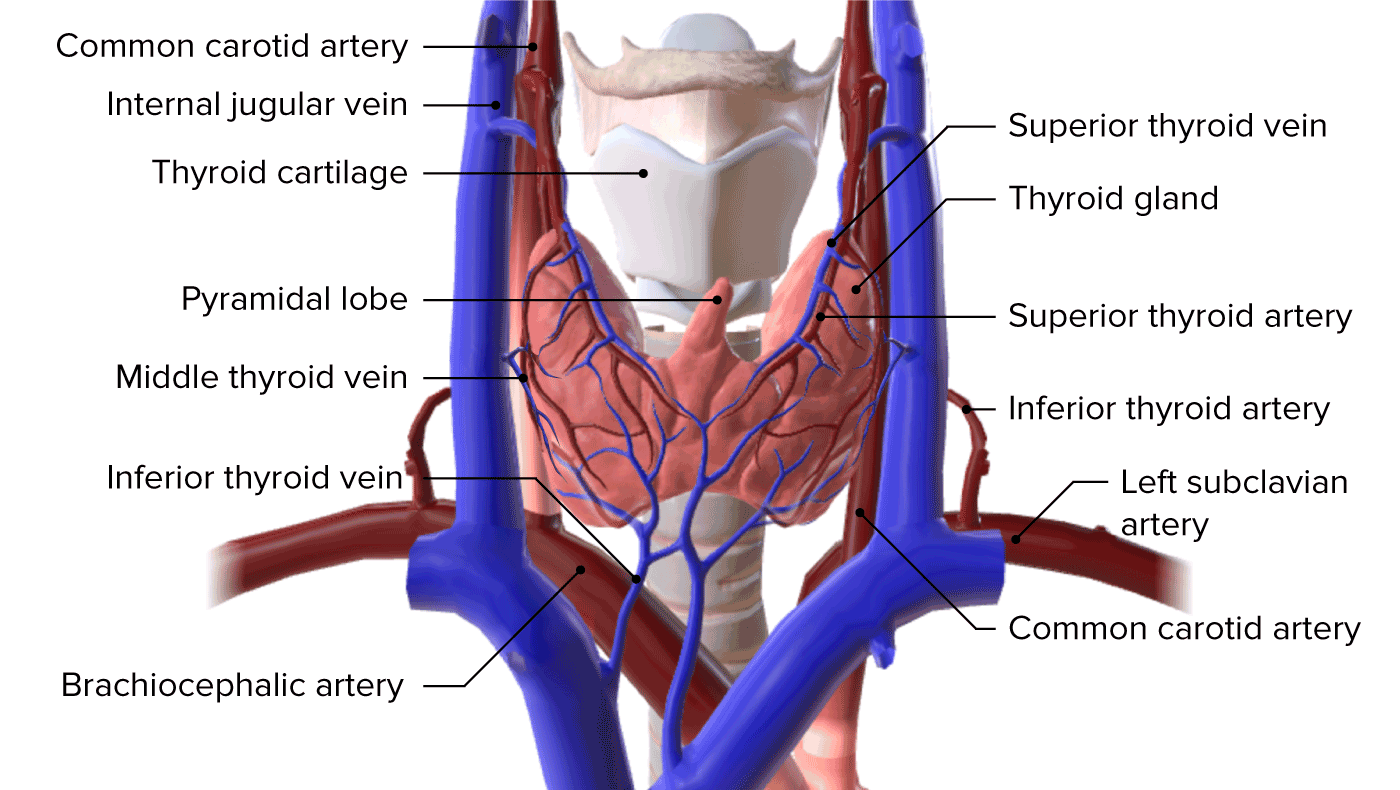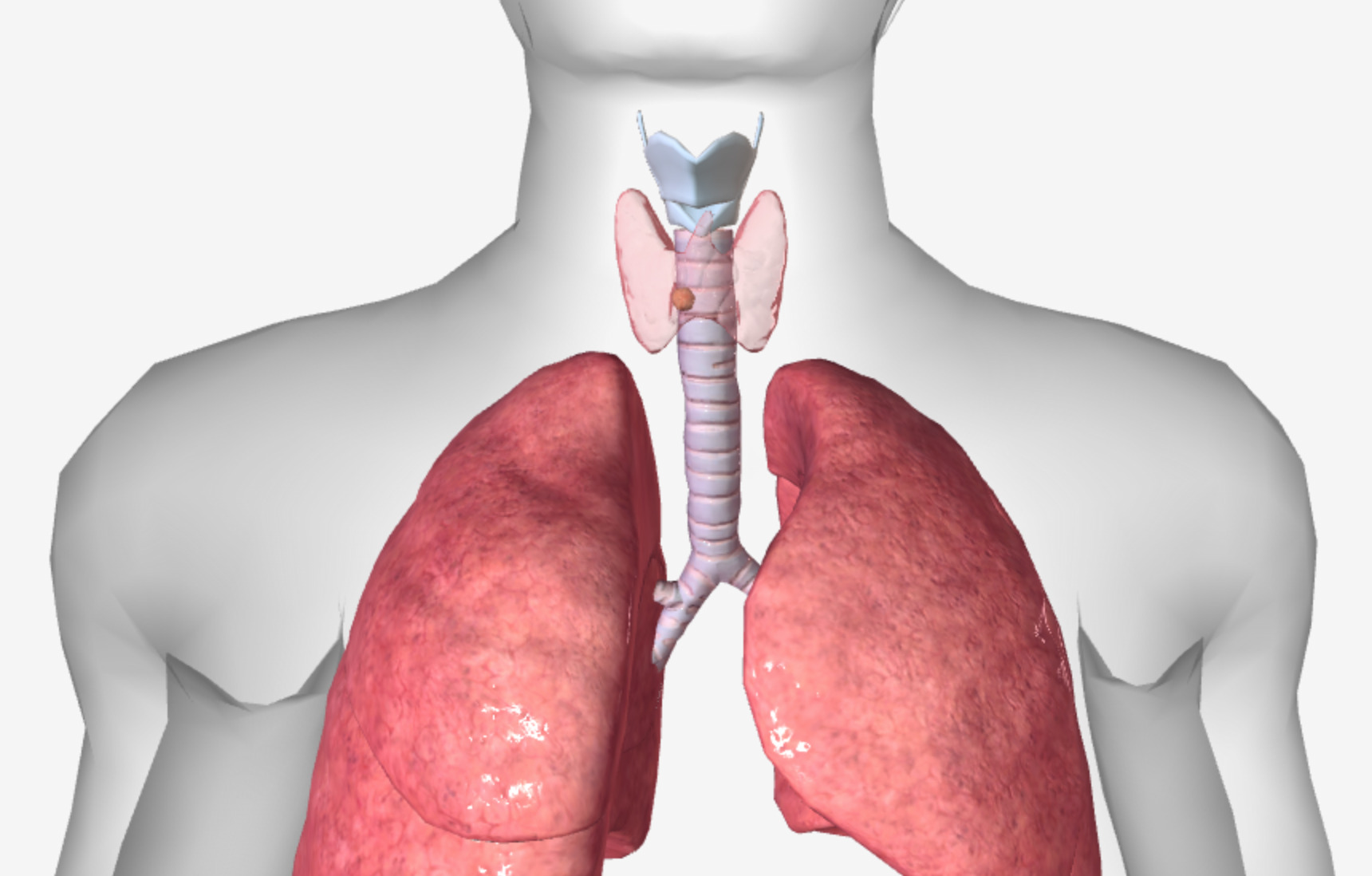Playlist
Show Playlist
Hide Playlist
Types of Thyroid Carcinoma
-
Slides ThyroidCancer EndocrinePathology.pdf
-
Reference List Pathology.pdf
-
Download Lecture Overview
00:01 Thyroid cancer types. 00:04 Differentiated, papillary, female preponderance peaking between 30 to 50; you should know everything that I will be referring to here with papillary, differentiated. 00:18 Lymphatic spread versus angioinvasive, this is lymphoinvasive, usually excellent prognosis, thank goodness, because it is common. 00:28 High incidence in patients with a Gardner’s syndrome, which is familial adenomatous polyposis; young patient with hundreds and thousands of polyps. 00:39 Along with this, also has sebaceous cysts, skin issues, dull bone pain, osteoma and a desmoid tumor, meaning to say your fibroma, right? Follicular, second most common, female preponderance, slow growth, painless nodules, cold nodules, both would be any type of cancer, this is… invades the capsule in vascular system. 01:10 Let’s stop here for a second. 01:13 An adenoma was angioinvasive more so than lymphoinvasive. 01:18 Papillary cancer, on your left, lymphoinvasive, follicular angioinvasive, but follicular, it will go beyond the capsule whereas adenoma, by definition, well encapsulated. 01:36 Are we clear? If not, review that point. 01:41 Angioinvasive, hematogenous; once again, excellent prognosis. 01:51 Medullary, 10 percent, arises from parafollicular C cells which produces calcitonin and if there is any discussion of amyloid, it will be the calcitonin type. 02:09 Do not forget that. 02:11 20 percent with MEN IIA or IIB, it will be associated with both. 02:16 We will talk about this in greater detail when we talk about IIA and IIB; both of them will have pheochromocytoma, both of them will have medullary cancer with thyroid, RET, RET, RET, proto-oncogene; good prognosis. 02:30 I will quickly mention anaplastic, less than 5 percent, poor prognosis, as you can expect with anaplastic; often prior history of goiter or perhaps even papillary thyroid cancer. 02:47 And the final type that you do want to keep in mind would be lymphoma, less than 5 percent of thyroid cancers, seen associated with, this is important, Hashimoto, autoimmune disease, lymphocytic infiltration of the thyroid gland; it may, it may then go on to as a sequelae a lymphoma. 03:07 Usually good prognosis. 03:09 Let’s talk about papillary cancer in greater detail. 03:12 Now, what I wish to show you here is the following. 03:16 We have papillary carcinoma and we have the lumen, we have the fibrovascular core, the fluid in the epithelium. 03:25 We will take a cross section… we take a cross section of it, then we call this a papillary cancer. 03:34 So, this is the nodule that we are seeing in which we are now taking an amplified version of it or amplified image of it and in the cartoon, you should be able to see a papilla. 03:48 Now, the arrow represents calcification, calcification or histology of what appears to being dark, welcome to psammoma bodies. 04:01 Take a look at the spelling of psammoma, P-S-A… the name of the cancer here is P-A-; P if that helps you, the P is silent obviously in psammoma, or both letters begin with the letter P. Histologically, extremely important, psammoma bodies, once again, are non specific though. 04:23 Psammoma bodies could be found with various cancers including meningiomas, including your serious cyst adenocarcinomas in the ovaries, psammoma bodies. 04:35 Cross section is what we are doing here of a papillary cancer. 04:39 Follicular cancer, second most common form of thyroid cancer. 04:42 Clinical features: slow enlarging painless nodules, we talked about, it is extremely angioinvasive, it is going to invade the capsule. 04:49 Here, if we take a look at the picture, we do not find papilla, we do not find psammoma bodies like we did in papillary cancer of the thyroid, you will find that the follicular epithelial cells of your thyroid gland are becoming cancerous. 05:06 The colloid that you see in the middle there, see that homogenously eosinophilic structure? It becomes less abundant because the follicular epithelial cells are now becoming excessive; invades the capsule and vascular system hematogenous spread. 05:22 Treated with lobectomy, subtotal thyroidectomy, you need to remove it. 05:28 What kind of nodule? Cold nodule. 05:31 Medullary cancer, this is a neuroendocrine, C cells, parafollicular C cells, calcitonin. 05:36 Sheets of nests of tumor cells in an amyloid stroma. 05:44 Okay, so, medullary, why did I say this so emphatically? Because amyloid is an important topic for us in pathology. 05:55 Amyloid, to you, a number of places multiple myeloma, different types of amyloid, diabetes type II called amylin. 06:04 We have amyloid that is seen with amyloid percussive protein, beta amyloid sheets with Alzheimer’s. 06:12 It is important that you are able to establish and identity amyloid in very common pathologies, alright? Here, we have medullary and the reason that this becomes important is because of MEN IIA and IIB, sheets of massive tumor cells and amyloid stroma, Congo red stain. 06:31 RET-proto-oncogene, peak incidence a little bit later 40 to 50. 06:36 Clinical features: paraneoplastic syndrome, diarrhea due to secretion of VIP. 06:43 Neuroendocrine type of cells and could be responsible for producing all kinds of interesting peptides and hormones. 06:50 The big one here though calcitonin, neuroendocrine, thyroid cancer. 06:55 Anaplastic, completely undifferentiated, huh! Whereas if it is papillary cancer thyroid, it is well differentiated. 07:03 Undifferentiated; very aggressive; mortality, look at this, 100 percent; 65 years of age; pathogenesis maybe due to inactivation of p53, tumor suppressor gene. 07:20 Clinical features: rapidly enlarging versus slowly enlarging with follicular, dyspnea, dysphagia because of the amount of enlargements taking place, guaranteed that your patient here with anaplastic. 07:35 Take a look at this picture here, completely undifferentiated, can’t really make out anything and causing then compression of the esophagus and trachea, a common theme that we have seen over and over again with thyroid. 07:48 Thyroid cancer, primary therapy of papillary, follicular, medullary, surgery. 07:55 Lymphoma, radiotherapy, chemotherapy, anaplastic, no doubt surgery. 07:59 If you can get there soon enough to remove it, but there is every possibility that your patient is not even going to make it. 08:06 Radioiodine is used as an adjunct in differentiated thyroid cancer such as papillary, follicular, keep those together as being a differentiated type of thyroid cancer whereas anaplastic would be undifferentiated. 08:21 Serum markers include the following. 08:24 Thyroglobulin becomes very important to you when we have-we have emphasized these clinical significance of thyroglobulin over and over again. 08:33 Calcitonin and CEA for medullary thyroid cancer cause… embryonic antigen. 08:42 Prognosis in differentiated pretty good, better with age less than 50, small or less invasive primary tumor and absence of distant metastases; obviously, all of that would contribute to a favorable prognosis. 08:57 Remember, differentiated will be thyroid with those… thyroid cancer would be follicular or papillary, undifferentiated, anaplastic, just be able to do that properly with organization.
About the Lecture
The lecture Types of Thyroid Carcinoma by Carlo Raj, MD is from the course Thyroid Gland Disorders.
Included Quiz Questions
A 40-year-old male patient presents with possible thyroid cancer. He has a family history of Gardner syndrome. Based on this history, what is the most likely thyroid cancer diagnosis?
- Papillary carcinoma
- Follicular carcinoma
- Medullary carcinoma
- Anaplastic carcinoma
- Lymphoma
A 50-year-old woman presents with a slow-growing, painless thyroid nodule that does not take up RAI. There is evidence of tumor capsular invasion and hematogenous spread. What is the most likely diagnosis?
- Follicular carcinoma
- Papillary carcinoma
- Medullary carcinoma
- Anaplastic carcinoma
- Lymphoma
Which thyroid carcinoma arises from calcitonin-producing C cells?
- Medullary carcinoma
- Papillary carcinoma
- Follicular carcinoma
- Lymphoma
- Anaplastic carcinoma
Which malignancy is associated with Hashimoto thyroiditis?
- Lymphoma
- Anaplastic carcinoma
- Medullary carcinoma
- Follicular carcinoma
- Papillary carcinoma
What is NOT a characteristic of anaplastic thyroid carcinoma?
- The average age of diagnosis is 35 years old.
- Pathogenesis related to p53 mutation
- Follicular epithelial origin
- Rapid growth, aggressive
- Mortality approaches 100%
Customer reviews
5,0 of 5 stars
| 5 Stars |
|
5 |
| 4 Stars |
|
0 |
| 3 Stars |
|
0 |
| 2 Stars |
|
0 |
| 1 Star |
|
0 |





